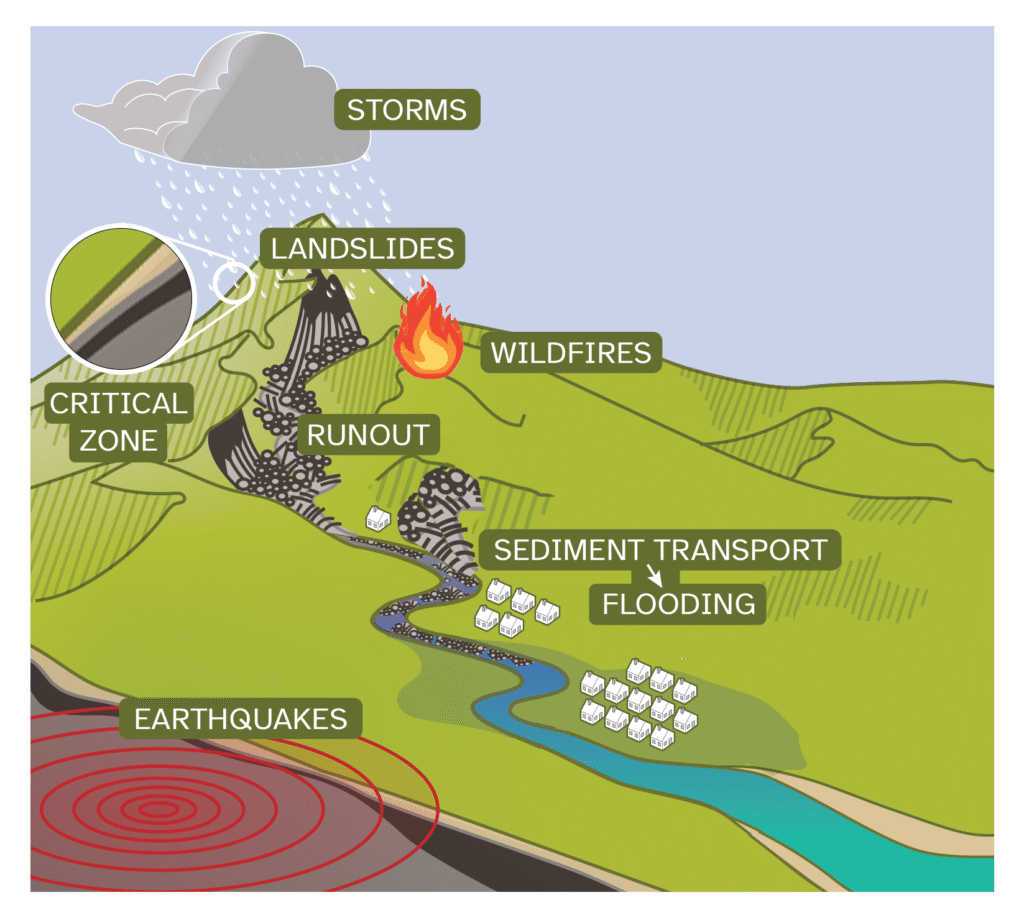
The University of Michigan (U-M) has been awarded a $15 million grant by the U.S. National Science Foundation to establish the Center for Land Surface Hazards (CLaSH). This groundbreaking initiative, in collaboration with over a dozen academic, governmental, and community partners nationwide, aims to advance research on the fundamental processes that lead to landslides, river erosion, debris flows, and flooding.
Directed by Marin Clark, a professor in the Department of Earth and Environmental Sciences at U-M, CLaSH seeks to develop new scientific frameworks and modeling tools to forecast and mitigate cascading hazards. These hazards often occur when natural disasters like hurricanes, wildfires, or earthquakes trigger secondary events such as landslides and flooding. The center will also focus on workforce development and community engagement, particularly in areas most affected by these hazards.
Understanding Cascading Hazards
Natural disasters can dramatically alter landscapes, leading to a chain reaction of related hazards. The challenge lies in predicting how these events connect, their intensity, and duration. CLaSH aims to address this by studying the interconnected processes that create land surface hazards.
“What’s new about our center is that we’re not just looking at a single hazard phenomenon. We’re really looking at a series of processes that create land surface hazards and how they link together,” said Marin Clark, principal investigator of CLaSH.
Unlike earthquakes and volcanic eruptions, which are geographically limited, land surface hazards can occur anywhere, including all 50 states. These hazards can persist for years, making preparedness crucial for societal health. For instance, Hurricane Helene’s landfall in 2024 caused widespread landslides and mudflows in North Carolina, altering river channels and potentially increasing flood risks in subsequent years.
Collaborative Efforts and Technological Advances
The center’s success will rely on the expertise of geoscientists, climate scientists, engineers, and students. This interdisciplinary approach allows for a comprehensive understanding of when and where these events might occur and their impact on communities.
“By bringing together a team of scientists and engineers across disciplines, we can link fundamental Earth-surface processes to hazards in ways that no single investigator could accomplish alone,” said Brian Yanites, co-principal investigator and associate professor at Indiana University.
Technological advancements play a significant role in this research. Dimitrios Zekkos, a co-principal investigator and professor at the University of California, Berkeley, highlighted the potential of remote sensing, robotics, and artificial intelligence in monitoring geological processes.
“Recent technological advances provide an unprecedented opportunity to monitor geologic processes in a way that was completely impossible only a few years ago,” Zekkos noted.
Building a Resilient Future
CLaSH is committed to educating the next generation of scientists and engaging with communities most impacted by land surface hazards. The center plans to offer training programs for instructors at community colleges and undergraduate institutions, focusing on public outreach and disaster preparedness.
“CLaSH offers us an opportunity to build a research community that crosses disciplinary silos and confronts the complexity of interconnected hazards, while raising public awareness,” said Josh West, co-principal investigator and professor at the University of Southern California.
The center’s proposal was developed as part of a previously funded two-year award from the NSF for a Center Catalyst in 2022, supported by U-M’s Research Development and Proposal Services unit. It includes 17 funded partner organizations and numerous collaborations with academic, government, nonprofit, and business entities.
As CLaSH embarks on this ambitious project, it represents a significant step forward in understanding and mitigating the risks associated with natural hazards, ultimately aiming to improve public safety and resilience.







